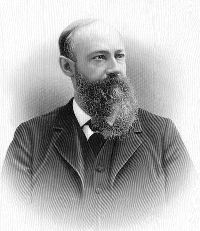John Wesley Hyatt facts for kids
Quick facts for kids
John Wesley Hyatt
|
|
|---|---|

John Wesley Hyatt
|
|
| Born | November 28, 1837 |
| Died | May 10, 1920 (aged 82) |
| Nationality | American |
| Occupation | Engineer |
| Engineering career | |
| Projects | production of celluloid |
| Awards | John Scott Medal (1898) Perkin Medal (1914) |
John Wesley Hyatt (born November 28, 1837 – died May 10, 1920) was a clever American inventor. He is best known for making it easier to produce celluloid, an early type of plastic.
Hyatt won the Perkin Medal and is in the National Inventors Hall of Fame. He held almost 238 patents for his inventions. These included better ways to process sugar cane and filter water.
Contents
Biography
Early Life and His Big Idea
John Wesley Hyatt was born in Starkey, New York. He started working as a printer when he was 16 years old. Later, he became famous for inventing a type of plastic. He received hundreds of patents for his many inventions.
One of his most famous inventions was a new material for billiard balls. Before Hyatt, billiard balls were made from ivory, which came from elephant tusks. Ivory was very expensive and hard to find. In 1863, a man named Michael Phelan offered $10,000 for a good ivory substitute.
Inventing Celluloid
Hyatt worked with his brother, Isaiah, to find a solution. They experimented with a material called Parkesine. This was a hard form of nitrocellulose. An Englishman named Alexander Parkes had invented Parkesine in 1862. It is thought to be the first true plastic. However, it was not very successful for businesses.
Another English inventor, Frederick Scott Archer, had used liquid nitrocellulose (called collodion) since 1851. He used it in photography. Printers also used it as a fast-drying film to protect their fingertips.
Hyatt's big breakthrough was finding a way to make solid, stable nitrocellulose. This new material could be used for many things. He patented his invention in the United States in 1869. He called it "Celluloid." Today, "Celluloid" is a common word, not just a brand name.
Celluloid Goes to Market
In 1870, Hyatt started the Albany Dental Plate Company. This company made billiard balls, false teeth, and piano keys using celluloid. In 1872, he created Hyatt’s Celluloid Manufacturing Company in Albany, New York. The company later moved to Newark, New Jersey in 1873.
Hyatt's celluloid invention led to a legal fight. An English inventor named Daniel Spill had patented a similar material called "Xylonite" in the UK. Spill and Hyatt went to court between 1877 and 1884. The court decided that Alexander Parkes was the true inventor of celluloid. However, both Hyatt and Spill were allowed to keep making celluloid.
Other Amazing Inventions
John Wesley Hyatt invented many other things too. He created the first injection moulding machine. This machine helps make plastic objects by injecting melted plastic into a mold. He also improved machines for processing sugar cane and extracting juice.
Hyatt also invented better roller bearings and a special sewing machine that could make multiple stitches. Because of his many contributions, John Wesley Hyatt was added to the Plastics Hall of Fame in 1974.
Hyatt Roller Bearing Company
In 1892, John Wesley Hyatt started the Hyatt Roller Bearing Company in Harrison, New Jersey. This company made roller bearings for cars. Big car companies like General Motors and the Ford Motor Company were his customers.
In 1895, Hyatt hired Alfred P. Sloan as a draftsman. Sloan's father was a major investor in the company. In 1905, Hyatt made Sloan the president of the company. The company was sold to General Motors in 1916. Alfred P. Sloan later became the president of General Motors.
See also
 In Spanish: John Wesley Hyatt para niños
In Spanish: John Wesley Hyatt para niños

